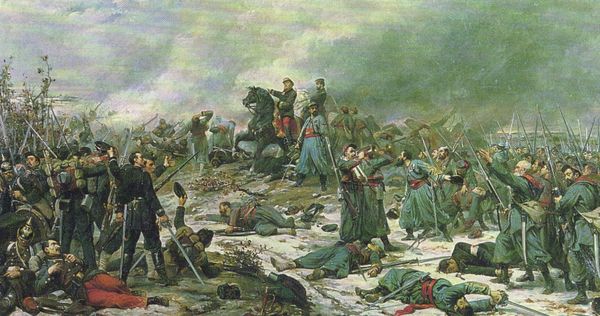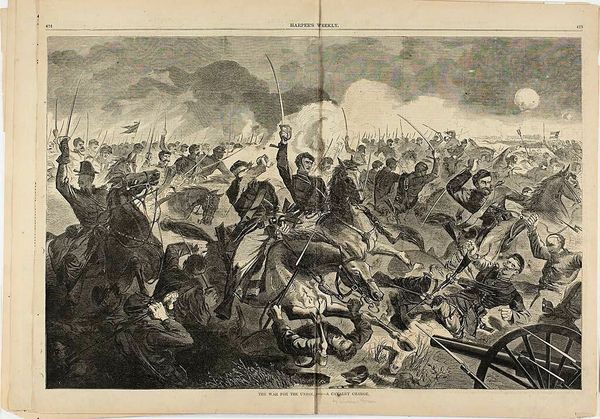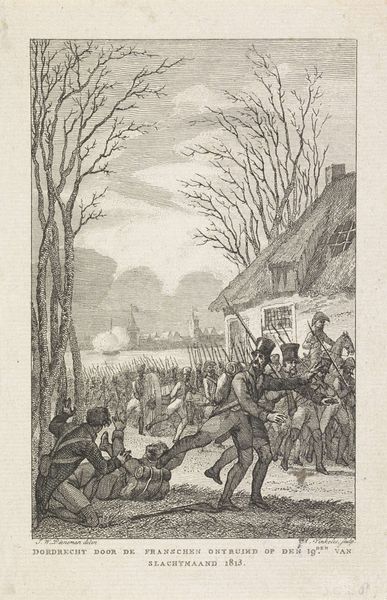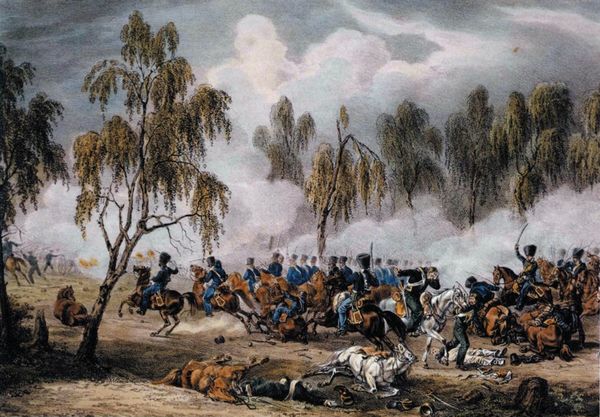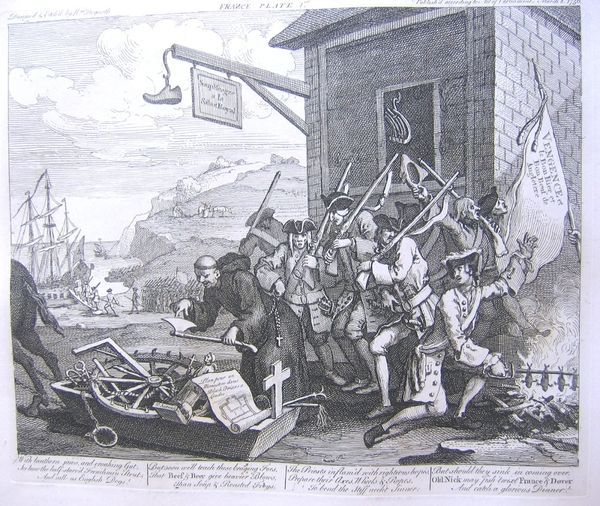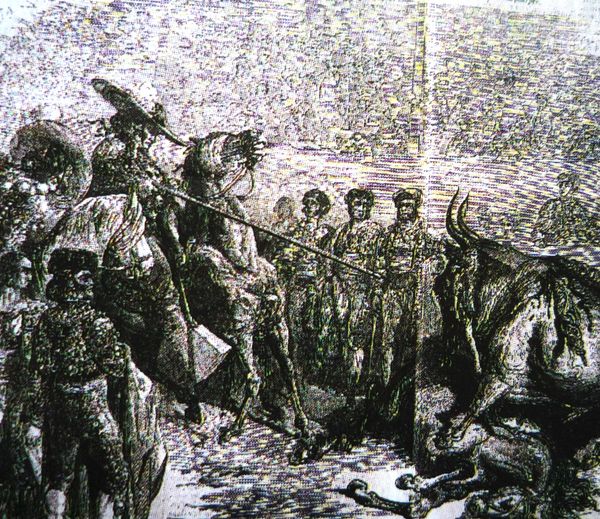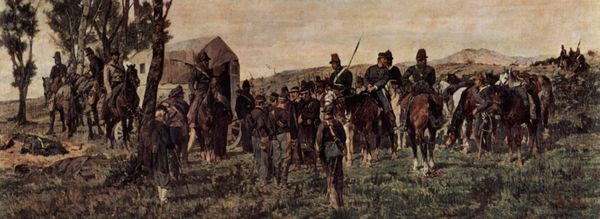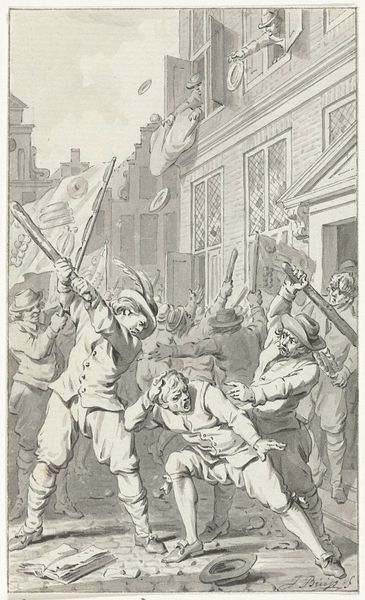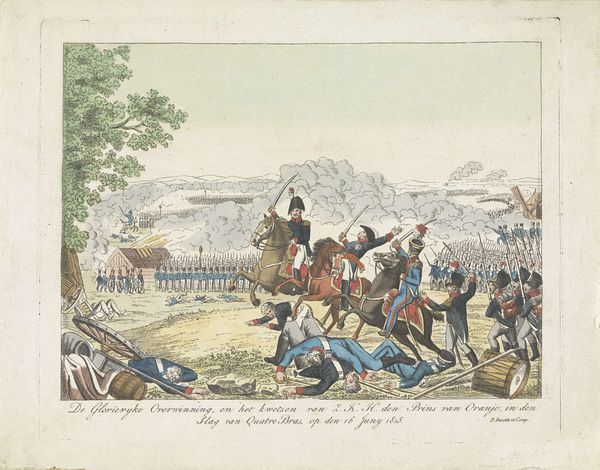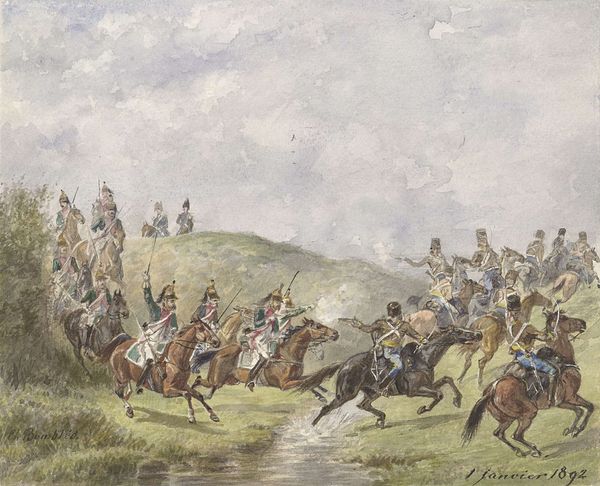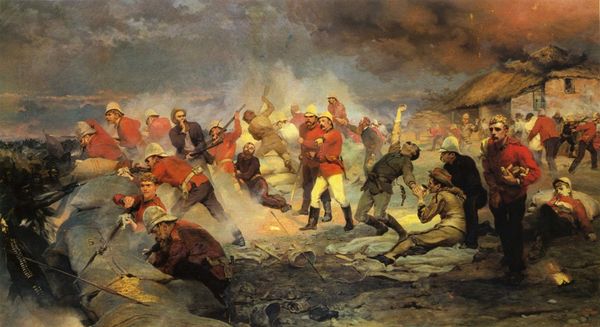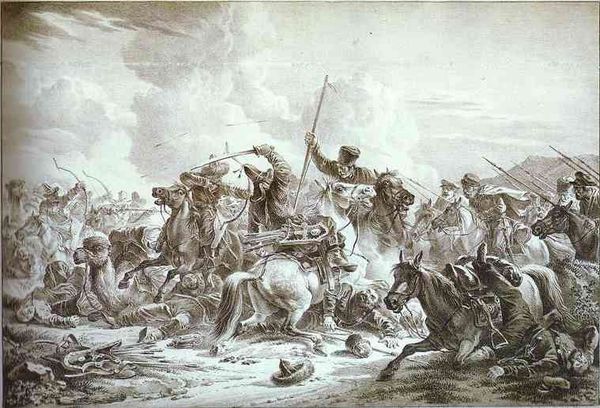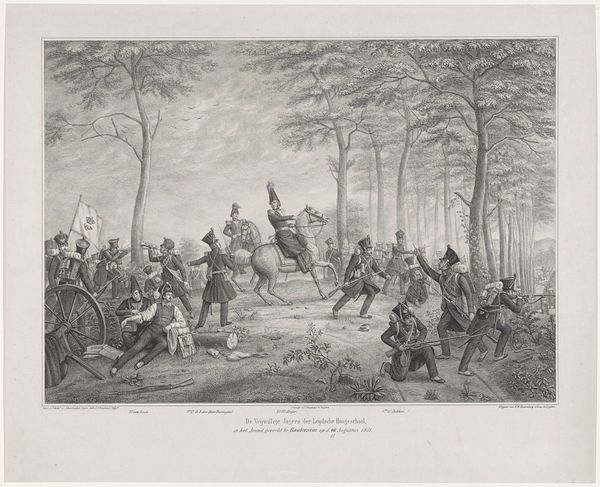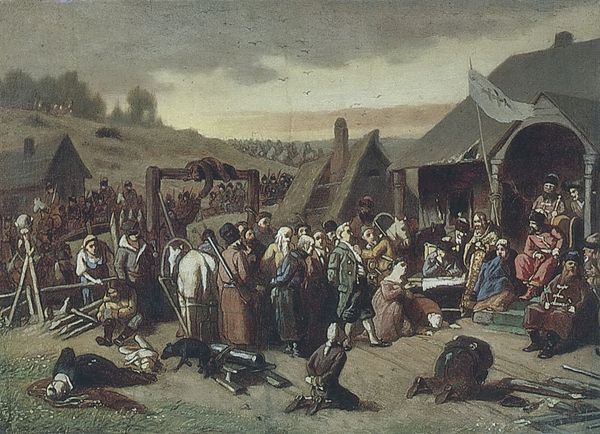
A mob of thieves had raided horses in the Romanian village of Izmall. Raised the alarm, the peasants chased and caught up with them. After a very fierce fight, with dead and wounded, the skidded horses were taken back by their masters 1931
0:00
0:00
painting, print
#
narrative-art
#
painting
# print
#
oil painting
#
genre-painting
#
history-painting
#
realism
Copyright: Public domain
Curator: This print, created in 1931 by Achille Beltrame, is called "A mob of thieves had raided horses in the Romanian village of Izmall. Raised the alarm, the peasants chased and caught up with them. After a very fierce fight, with dead and wounded, the skidded horses were taken back by their masters." It definitely conveys a strong sense of chaos and violence. What strikes you most about it? Editor: The figures all seem jumbled together. The realism makes it almost unsettling; the narrative suggests a moment of social upheaval and rural resistance. How do you interpret this work in the context of its time? Curator: This piece visualizes the tensions that underlay rural life. It isn't just about theft; it reflects deeper inequalities and power struggles. Consider the period. The 1930s were a time of immense political and economic turmoil globally, including in Romania, where rural populations often faced marginalization and exploitation. How does understanding this context change how we view the conflict depicted? Editor: It makes it feel less like a simple crime and more like a revolt. Are the "thieves" merely stealing, or are they challenging the established order in some way? Curator: Exactly! The artist seems to invite us to question who the real 'thieves' are. Is it those taking horses, or those creating the conditions where such actions seem necessary? Think about land ownership, access to resources, and the overall socio-economic hierarchy of the time. What visual cues might suggest something about class differences here? Editor: I see that the peasants wear simple clothes and seem to be fighting with basic tools against men with horses. This artwork gives visibility to those fighting injustice in everyday situations. Thank you. Curator: Yes, visibility and a chance to think critically about history through the lens of those often left out of official narratives. A valuable lesson, indeed!
Comments
No comments
Be the first to comment and join the conversation on the ultimate creative platform.
